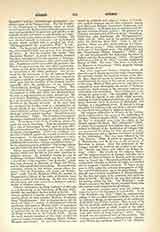

Gortyna, a titular see, and in the Greek Church metropolitan see, of the Island of Crete. The city, situated at the foot of Mount Ida, not far from the River Lethe, was first called Larissa, afterwards Cremnia, then Gortys, and finally Gortyna. Homer mentions it as a fortified city, which gives an idea of its great antiquity. Previous to the Roman occupation it was continually at war with the two neighboring and rival cities of Cnossus and Cydonia, contending with them for supremacy. The result was desolation in an island predestined to happiness by its geographical position, climate, and soil. The Cretans, indeed, were ever the cause of their own distress, being at all times discontented with their government. Under Roman rule Gortyna became the civil and ecclesiastical metropolis of the island, which then prospered in a degree hitherto unknown. Its first bishop was St. Titus the disciple to whom St. Paul addressed one of his Epistles. A basilica dedicated to St. Titus, discovered at Gortyna partly in ruins, dates from the fifth, perhaps from the fourth, century. Among the earliest occupants of the see were St. Philip, a contemporary of Marcus Aurelius, whose feast is kept April 11; St. Myron, commemorated August 8; St. Cyril, July 9; St. Eumenius, September 18; St. Peter the Younger, July 14. In 170 St. Dionysius, Bishop of Corinth, addressed a letter to the community of Gortyna (Euseb., H. E., IV, xxiii), then probably the metropolitan see of Crete. Among its archbishops mention should also be made of St. Andrew of Crete (d. 740), a famous Byzantine poet and orator, and opponent of the Iconoclasts. In 825 the island was taken by the Arabs, Archbishop Cyril was slain for refusing to apostatize, and Gortyna so completely destroyed that it never rose from its ruins. Thenceforth, moreover, the metropolitan ceased to bear the title of Gortyna, took that of Crete, and resided elsewhere, probably at Candia, a city built by the Arabs and made capital of the island. In the tenth century Nicephorus Phocas reconquered Crete for the Byzantine Empire, which held it until 1204, when it fell into the hands of the Venetians, who retained the island until 1669, when the Turks took possession of it. The Venetians did not allow the Greek bishops to reside in Crete, while the Latin archbishop bore the title of Candia, not of Gortyna. Even yet the Latin diocese retains the name of Candia (q.v.), Gortyna being a titular archiepiscopal title. On the other hand the Greek Archbishop of Gortyna calls himself Metropolitan of Crete. The extensive ruins of Gortyna are located near the village of Haioi Deka. Among them are a temple of Apollo, several statues, the bascilica of St. Titus, and numerous inscriptions, among which is the text of the so-called Laws of Gortyna, found in 1884, which afford us a good insight into Greek law of the fifth century B.C. Aesculapius was much honored at Gortyna. Within an hour’s distance of the ruins is an immense grotto, by many archaeologists considered identical with the famous labyrinth. It is, however, only an ancient quarry out of which Gortyna was built; the labyrinth was situated near Cnossus.
S. VAILHÈ

